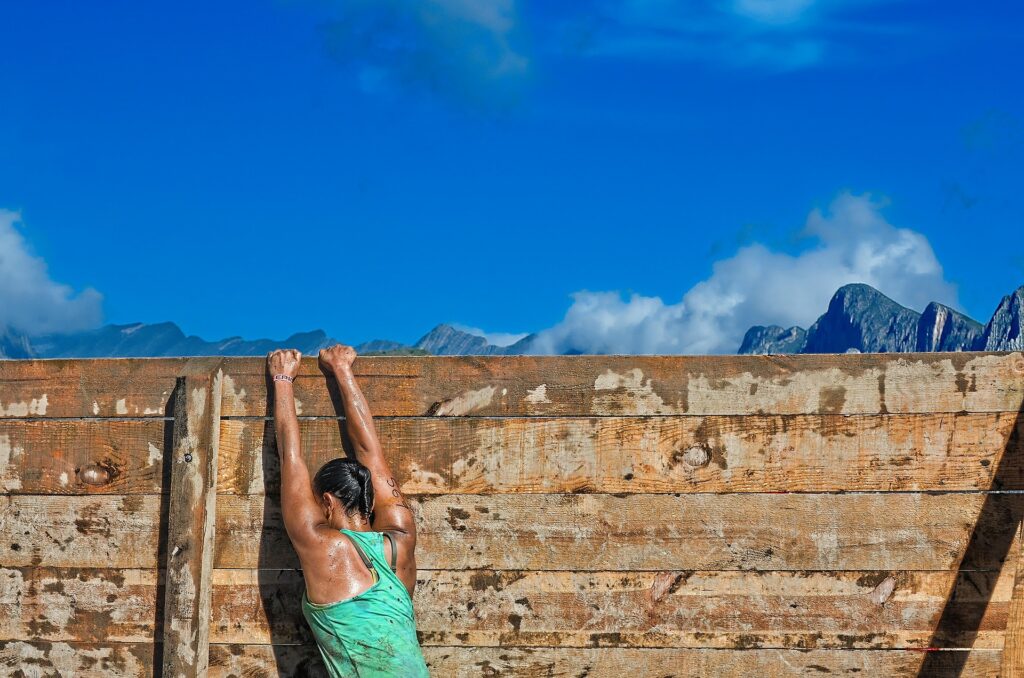Pushing Your Students Enough

Working within the limits of your body is important to your long-term health. But making sweat angels on the floor after every training session or working out to the point of injury aren’t going to get you very far very fast. And if you never push yourself you’ll also never have your capabilities expand to encompass new possibilities.
I’m seeking always to find the sweet spot for my students. A place where we can push mentally and physically that keeps them engaged, pushes them, but doesn’t overwhelm them physically or emotionally (too much or too often—a little bit is ok).
Vitality Signs
These are some signs I look for while teaching to tell me if we’re hitting it right.
Smiles. Not necessarily all the time but there is generally a look of hardworking satisfaction when someone is in their sweet spot. If there’s a look of boredom (passive expression, slumped shoulders) or prolonged looks of overwhelm (grimace, furrowed brow, sneer) maybe we’re going too far in one direction.
Relief when we stop. When I stop a drill to introduce the next concept or make a correction, I consider it a victory if at least 50% of the group give a sigh of relief. If students collapse or don’t even make it to the break (stopping early), probably too much. If we stop and they look completely fresh, I haven’t pushed enough.
High Energy. Appropriate challenge tends to bring the energy level up in the room. That means reasonably quick and crisp movements, elevated posture, some laughter or positive vocalization, and a balance between the feel of hard work and enjoyment. If people are hunched over, dragging their feet, or frequently pausing, it could mean that we’re working too hard, but often means that my students aren’t being challenged enough mentally or physically (possibly both).
Focus. Appropriate pacing and difficulty makes it easier to keep on track. If a bulk of students are getting easily distracted or moving off topic, then generally the challenge is not sufficient, the pacing is too slow, or the difficulty too low.
Scaling Intensity
There are a few ways to up the challenge and intensity.
Speed. Bring the speed of the exercise up while still demanding the same level of precision. Sometimes letting your students go a little over the top can also be good to feel where their limits really are. Being at the edge of flailing/precision is often where you want to be working (but more toward precision).
Complexity. Add more context, add another layer, string together techniques into a sequence. Give your students another objective that they need to juggle along with the first.
Smoothness. Many people can crank out speed and relative precision but with a complete lack of appropriate rhythm or flow. Often I can make an exercise more difficulty by asking students to slow down but eliminate pauses and focus on appropriate mechanics.
Move Into Challenge then Back to Basics
Fundamentals are the base upon which greater physical feats and technical applications are built. As a teacher we have a greater awareness than our students do of what is needed long-term. Many teachers want to stick with simple fundamental drills for a long time to help set this base before progressing in difficulty. For many students, particularly new ones, focusing on the same fundamentals can get boring and repetitive.
Though an adamant statement from one’s teacher might help you stay focused for a time, for many what is needed is a peek through the door of greater challenge to help put these fundamental skills in greater context. The reason that experienced practitioners can spend hours on simple drills is that they have a deep understanding of why they are important, and a context for understanding the smallest of adjustments and the benefits of conditioning.
So don’t be shy about upping the difficulty beyond the fundamentals that are currently in place. Make sure that your students know what is going on—so they aren’t discouraged—and make pushing over the top a fun and engaging experience.
Attempting feats that are beyond your current ability can sometimes lead to surprising results, give you context for simpler skills, and can be a fun way to get more comfortable with failure—which is necessary for really getting good.
Happy training everyone, and never push beyond the limits of safety.





Responses